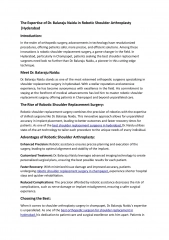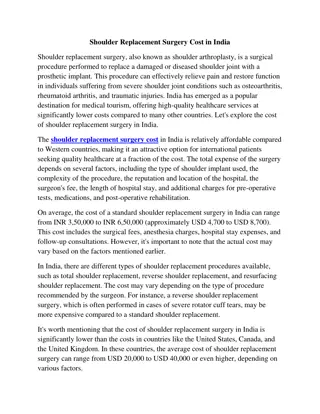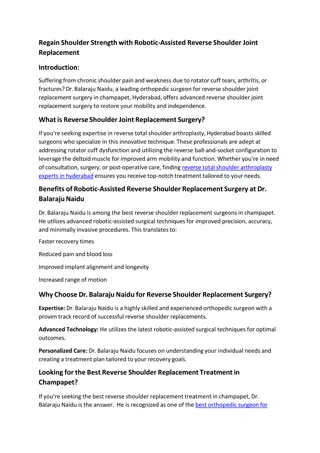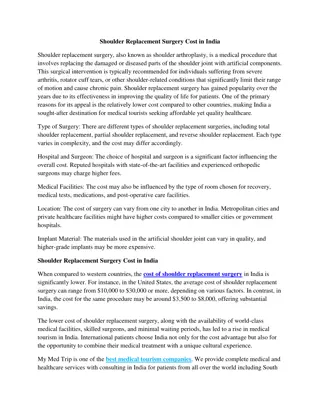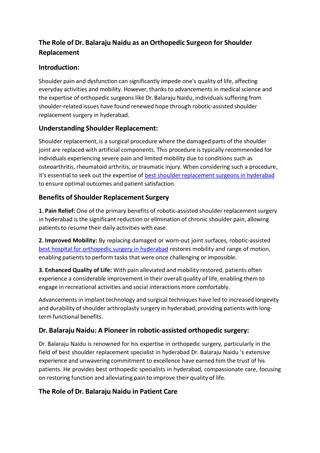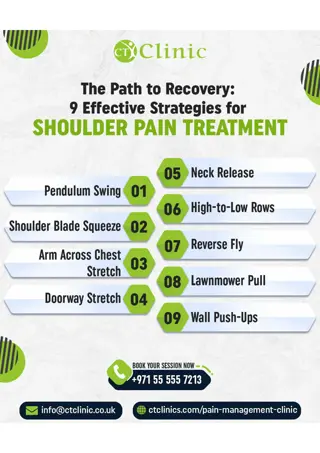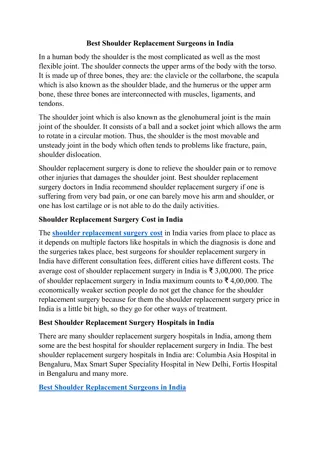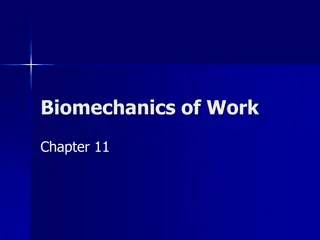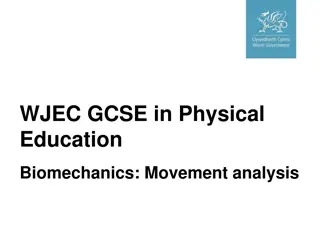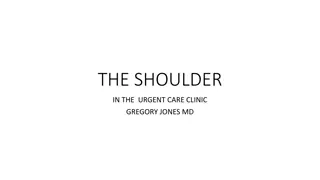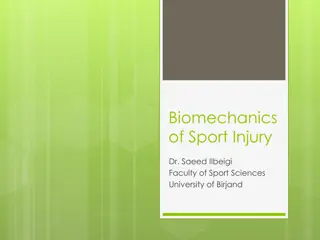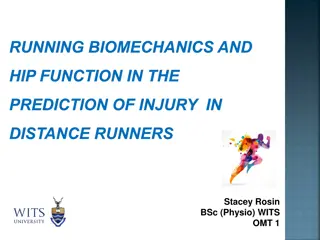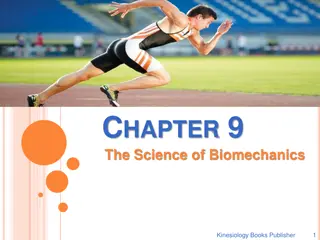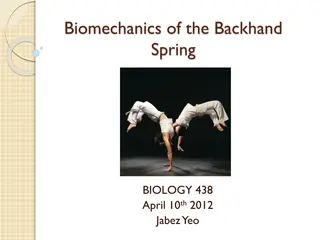
Biomechanics of the Shoulder Joint for Improved Rehabilitation
Explore the complex biomechanics of the shoulder joint to enhance rehabilitation strategies. Learn about the intricate movements and structures involved in shoulder mechanics, crucial for effective treatment of shoulder injuries and pain.
Download Presentation

Please find below an Image/Link to download the presentation.
The content on the website is provided AS IS for your information and personal use only. It may not be sold, licensed, or shared on other websites without obtaining consent from the author. If you encounter any issues during the download, it is possible that the publisher has removed the file from their server.
You are allowed to download the files provided on this website for personal or commercial use, subject to the condition that they are used lawfully. All files are the property of their respective owners.
The content on the website is provided AS IS for your information and personal use only. It may not be sold, licensed, or shared on other websites without obtaining consent from the author.
E N D
Presentation Transcript
StudyMafia.Org Biomechanics of Shoulder Joint Submitted To: Submitted By: Studymafia.org Studymafia.org
Table Contents Definition Introduction Biomechanics of Shoulder About Shoulder Joint Mechanics Conclusion 2
Definition The shoulder area is infamously known to be one of the most complex regions of the body to evaluate and rehabilitate. 3
Introduction Due to the multiple joints involved during shoulder movement, it is prudent to refer to the area of the shoulder complex. To effectively rehabilitate a shoulder injury in clinical practice, it is important to have a functional knowledge of the underlying biomechanics of the shoulder complex. 4
Biomechanics of Shoulder Glenohumeral (GH) Joint --- Arthrokinematics Spin (pure flexion and extension) Inferior glide (Abduction) Superior glide (Adduction) Posterior glide (Medial rotation) Anterior glide (Lateral rotation 6
Biomechanics of Shoulder Glenohumeral (GH) Joint The natural arthrokinematics of the GH joint of the shoulder complex during an open-chain movement supports various directional glides of the humeral head within the glenoid fossa. Del Maso and colleagues have estimated that a maximum of 7.5 mm of upward translation of the humeral head may occur during range of motion movements. 7
Biomechanics of Shoulder Glenohumeral (GH) Joint The success of a coordinated movement of the humeral head with normalized arthrokinematics, avoiding an impingement situation, requires the harmonious co-contraction of the RC tendons. Abnormal glenohumeral translations have been linked to pathological shoulders and it has been suggested to be a contributing factor for shoulder pain and discomfort, and may also lead to the damage of encompassing structures. 8
Biomechanics of Shoulder Acromioclavicular (AC) Joint The AC joint is a diarthrodial and synovial joint. It allows for axial rotations and antero-posterior glides. Because there are not direct attachements of muscles to the joint, all movements are passive and initiated by movements at other joints (such as the ST joint). 9
Biomechanics of Shoulder Osteokinematics Flexion / extension Abduction / adduction Medial / lateral rotation Arthrokinematics Posterior / anterior spin Inferior / superior spin Anterior / posterior glide 10
Biomechanics of Shoulder Scapulothoracic (ST) Joint Scapulothoracic complex movements: Elevation and protraction = anterior elevation Elevation and retraction = posterior elevation Depression and protraction = anterior depression Depression and retraction = posterior depression 11
Biomechanics of Shoulder Scapulothoracic (ST) Joint The movement of the scapula along the thoracic cage also directly influences the biomechanics of the shoulder complex as a whole, and can moreover predispose the development of impingement syndrome. The healthy movement of the scapula along the thorax during arm elevation includes protraction, posterior tilting, and lateral rotation, depending on the plane of movement. 12
About Shoulder Joint Biomechanics The pathological kinematics of the ST joint include, but are not limited to: Increased medial rotation Decreased superior rotation, and Decreased posterior tilting 13
About Shoulder Joint Biomechanics These movement alterations are believed to increase the proximity of the rotator cuff tendons to the coracoacromial arch or glenoid rim,however, there are still points of contention as to how the movement pattern deviations directly contribute to the reduction of the subacromial space. 14
About Shoulder Joint Biomechanics For the sake of clarification, the current literature differentiates between an internal impingement and an external impingement. An impingement that involves a decreased space towards the coracoacromial arch is said to be an external impingement, whereas an internal impingement involves the glenoid rim,[18] and can be associated with a GH instability 15
About Shoulder Joint Biomechanics Regardless of the classification, the dysfunctional shoulder mechanisms can further the progression of rotator cuff disease and must therefore be understood as a neuromuscular impairment. The neuromuscular control of the scapula relies on the balanced team-work between the global movers and the fine-tuning stabilizing muscles of the shoulder complex \ 16
Conclusion The biomechanics of the shoulder are highly complex. First, it is composed of four joints (glenohumeral, acromioclavicular, scapulothoracic, and sternoclavicular). The glenohumeral joint has six degrees of freedom and is the most mobile joint in the human body, allowing the hand to reach a wide range of positions. 17

